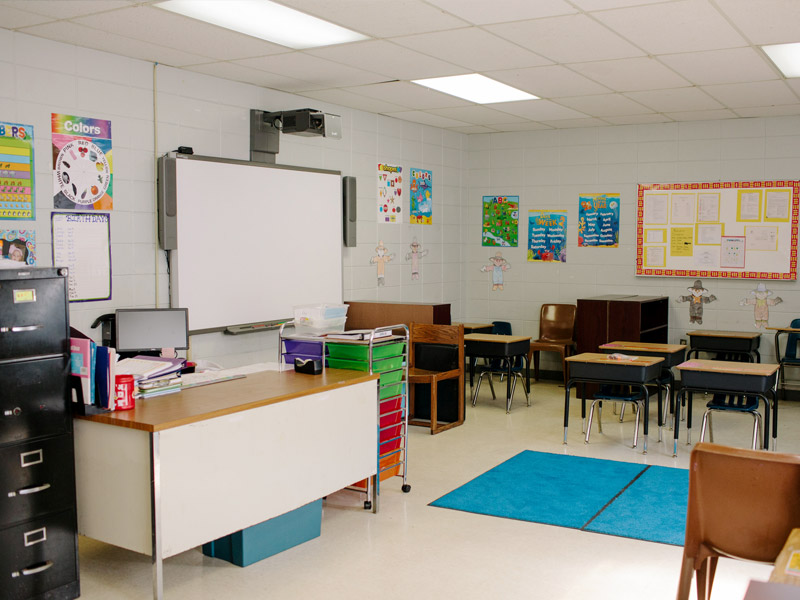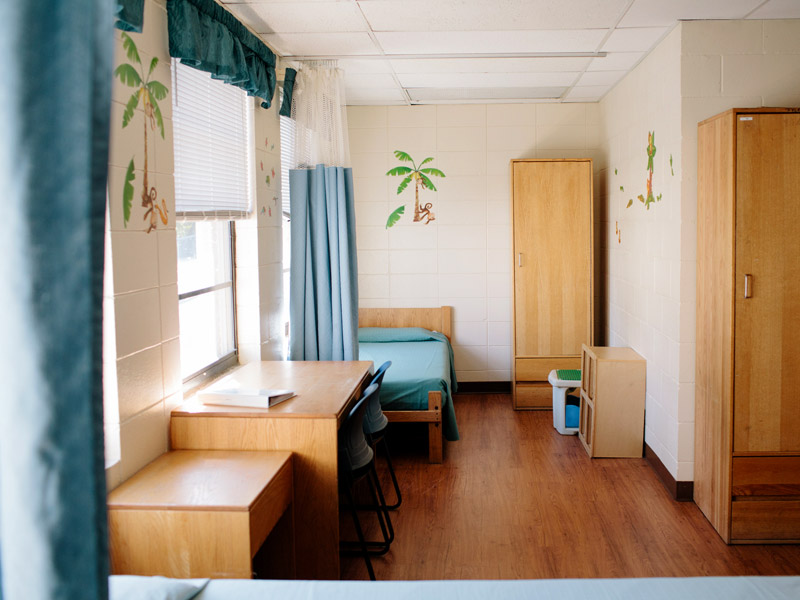Learn about the side effects, causes, signs and symptoms of anxiety. Millcreek of Magee Treatment Center offers the best residential treatment and home-based programs for children & adolescents struggling with anxiety.
Understanding Anxiety
Learn more about anxiety
Generalized anxiety disorder (GAD), obsessive-compulsive disorder (OCD), specific phobias, panic disorder, social anxiety disorder, and separation anxiety disorder are examples of anxiety conditions that are frequently diagnosed when an individual experiences ongoing feelings of fear, apprehension, and worry when triggered by an outside stimulus or intrusive thoughts that are disruptive and/or disturbing. And while it is widely known that adults suffer from such conditions, children and adolescents are just as likely to grapple with these debilitating mental illnesses and experience disruptions to their daily lives.
With the potential to cause a number of obstacles, even when trying to complete the most mundane of tasks, prolonged feelings of anxiety can elicit a number of hindrances in a young person’s life if symptoms of these disorders remain. Academic performance, interactions with peers, and the ability to cope with minutely stressful situations or circumstances can all be adversely affected when a youth has an anxiety disorder. It is imperative that caregivers and parents identify the symptoms of generalized anxiety disorder and seek appropriate care for their child or adolescent, as treatment can help a young person find relief from his or her anxiety and go on to live without the troublesome symptoms of an anxiety disorder.
Statistics
Anxiety statistics
The National Institute of Mental Health has suggested that anxiety disorders are quite common among young people. Research supports this notion as it is estimated that one quarter of all children and adolescents between the ages of 13 and 18 meet diagnostic criteria for an anxiety disorder or disorders. Additionally, it is speculated that one of every eight children under the age of 13 experience symptoms synonymous with an anxiety disorder.
Causes and Risk Factors
Causes and risk factors for anxiety
The onset of anxiety disorder symptoms cannot be traced back to a single, isolated cause. Because of this, mental health professionals and experts in the field have concluded that the following causes and risk factors best explain the origins of anxiety disorder symptoms in children and adolescents:
Genetic: Children and adolescents with a family history of anxiety disorders have an increased risk for developing anxiety symptoms as well. Research that examined the prevalence rates of anxiety conditions among people who share genes have found that these conditions can, in fact, run in families. Because of this finding, it can be said that there is a genetic component that influences the onset of anxiety disorders.
Physical: Serotonin, a neurochemical in the brain that regulates feelings of contentment, is known to be imbalanced in the brains of anxiety sufferers. The reason for this is due to the surge of serotonin that occurs when a person is under a great deal of stress and the brain’s inability to return this chemical to appropriate levels, thus preventing an individual from feeling a sense of well-being following a stressful situation or circumstance. Additionally, it has been found that anxiety sufferers have increased levels of the hormone known as cortisol, of which is released in larger amounts when the brain alerts hormone-releasing glands that a situation is stressful. Both of these chemical changes can cause the symptoms of anxiety to manifest in a child or adolescent.
Environmental: The environment in which a child is primarily raised can significantly impact whether other not the symptoms of anxiety will manifest. Experts in the field of mental health have concluded that certain environmental influences, such as exposure to chronic stress, trauma, abuse, neglect, and inconsistent parenting, can trigger anxious feelings in a child and lead to a diagnosis of an anxiety disorder or disorders at some point. Furthermore, if a child is exposed to these stressors early in life, there is a higher likelihood that anxiety will be a factor in a child’s life. Lastly, if a child or adolescent is pressured to perform or excel at a level in school that he or she is not able to achieve, that young person may experience symptoms synonymous with an anxiety disorder as a result.
Risk Factors:
- Family history of anxiety or another mental health condition
- Exposure to unstable home environments
- Experiencing pressure to perform at a certain level in academic settings
- Inconsistent parenting
- History of abuse and/or neglect
- Exposure to trauma
- Exposure to violence
Signs and Symptoms
Signs and symptoms of anxiety
Anxiety symptoms can be triggered by a number of circumstances or thought processes. These influences can ultimately affect the obviousness of signs that a youth is battling an anxiety disorder. Depending on the type of anxiety a young person is suffering from, the age of the youth, and longevity of the symptoms present, the symptoms of anxiety can also vary in severity. The following behavioral, physical, cognitive, and psycho-social symptoms infer a child or adolescent is struggling with an anxiety disorder and should be treated by a mental health professional before the condition worsens:
Behavioral symptoms:
- Isolation from others
- Engaging in ritualistic behaviors
- Self-injury
- Uncontrolled emotional outbursts
- Restlessness
- Rapid communication of ideas
- Avoidance of certain circumstances or people
- Refusing to go to school
- Impaired academic performance
Physical symptoms:
- Frequent urination due to nervousness
- Altered eating habits
- Weight gain
- Weight loss
- Sleep disturbances
- Tense muscles
- Headaches or migraines
- Frequent stomachaches
Cognitive symptoms:
- Poor concentration
- Rapid thought processes
- Inability to be patient
- Repetitious thoughts
Psycho-social symptoms:
- Increased irritability
- Hopeless feeling
- Feelings of helplessness
- Low self-esteem
- Abrupt shifts in mood
- Loneliness
- Constant feeling of being under pressure
Effects
The effects of anxiety
Prolonged anxiety can render a child or adolescent susceptible to adverse effects. For this reason, it is important that treatment be sought for a youth struggling with anxiety so that the following effects do not occur:
- Hindered learning in academic settings
- Academic failure
- Social withdrawal or isolation
- Inability to form healthy relationships with others
- Increased need for hospitalization
- Increased likelihood for engaging in self-harming behaviors
- Suicidal ideation
- Substance use or abuse
- Development of another mental illness or illnesses
Co-Occurring Disorders
Anxiety and co-occurring disorders
The distressing symptoms of anxiety can trigger the onset of another mental health condition or conditions. Children and adolescents who grapple with these symptoms are especially vulnerable to the development of another mental illness as they are still developing physically and emotionally. If the symptoms of anxiety are not treated, the following mental health conditions could be diagnosed in conjunction to an anxiety disorder. Additionally, if the following mental illnesses are present before anxiety develops, they could cause anxiety disorder symptoms to manifest at some point:
- Depressive disorders
- Bipolar disorder
- Additional anxiety disorders
- Attention-deficit/hyperactivity disorder
- Sleep disorders
- Anorexia nervosa
- Bulimia nervosa
- Substance abuse disorders



